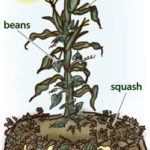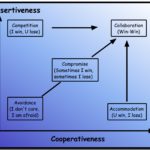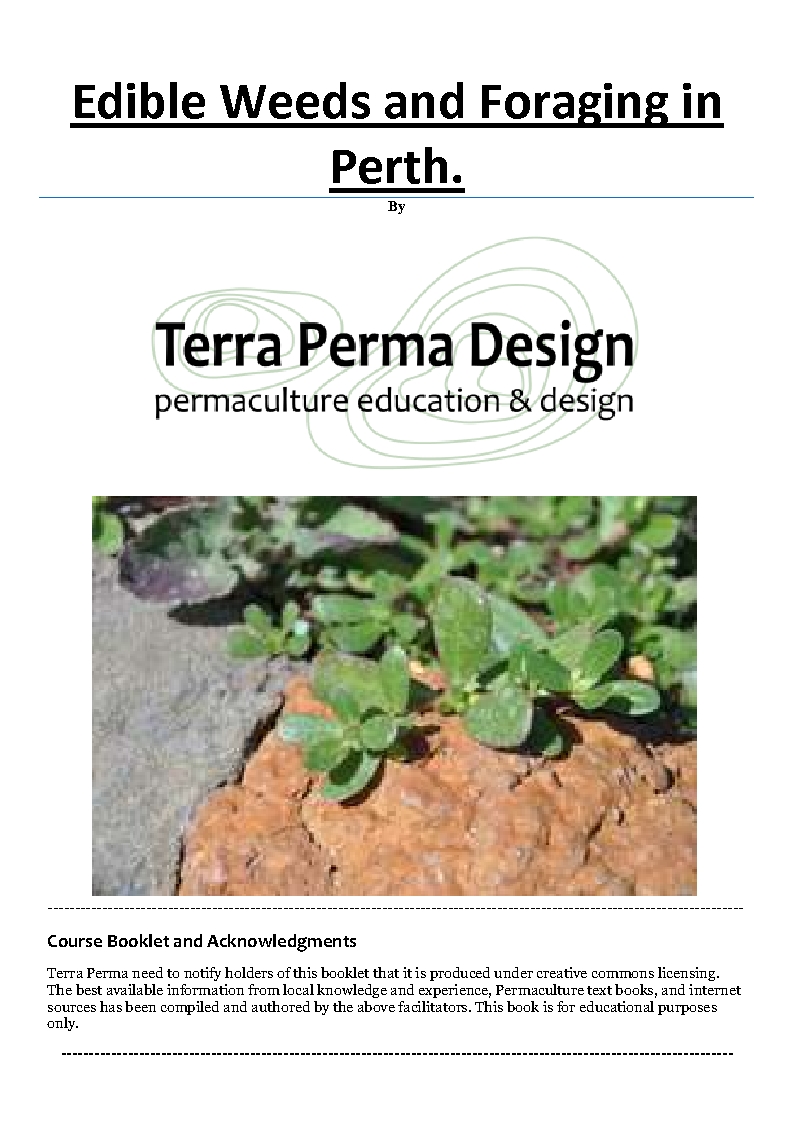
Free Permaculture Design Course with Open Permaculture School – Regenerative Leadership Institute – Part 1 Fundamentals
Link to the full course: Part 1 – Fundamentals
Thank you Charles of Terra Perma Design for the link https://www.openpermaculture.com.
Personal note: Of all the lifestyles, beliefs, causes, languages, cults and schools of thought I’ve explored, stood for and by, studied, recruited for, immersed in and supported… I feel, in our current time, Permaculture is something everyone should get to know about more and more. If you know a little bit, explore it more. If you don’t know anything at all find a local group and see what have to teach. I added language there too because things like waste are seen as resource/energy.
Permaculture Explained in 3 Minutes
Weeds are seen as pioneer plants. Pests are seen as part of a bigger cycle/system.
How can permaculture change the world?
– Permaculture is a holistic design system for creating sustainable human settlements and food production systems. It is also committed to preserving and extending natural ecosystems. It is a movement concerned with sustainable, environmentally sound land use and the building of stable communities, through the harmonious interrelationship of humans, plants, animals and the earth.

3 ethical principles
Care of the Earth, Care of People, Share the Surplus. Bill Mollison added a fourth one later – limit consumption and be concerned about population growth.
8 steps to permaculture design success
1 – Analysis. Listing the characteristics of a component – from tangible materials such as water and soil, to more abstract concepts such as time and ethics.
2 – Direct observation of a site. It’s about grabbing a camera and a notebook and heading out for some observation “in the field”.
3 – From our observations, experiences and research we start to understand the methodologies nature uses and the patterns it forms to help it accomplish its goals and then use them to guide our permaculture practice.
4 – Designs can evolve from some sort of plan, and continue to change and become refined by the choices we make to try to realise that plan. You are presented with options that you decide between and come up with a workable process that moves you towards that goal.
5 – Using pictorial maps of the site and then overlaying design ideas on transparencies to see how those ideas would dovetail with the site.
6 – The notion of randomness to open our designs up to ideas we may not have even considered.
7 – Looking at how the process in a workplace flows and then designing a space and a system that allows for the most productivity for the least energy expenditure.
8 – Looks at zones and sectors. This analysis is mindful of two types of energy. Number one, the energy that is on site – such as people, machinery, plants and wastes. For this type of energy we use zone analysis. The second type of energy is that which flows through the site – things like wind, sunlight, rainwater and wildlife. We use sector analysis to harness the energy from these flows for the benefit of the ecosystem on the site.
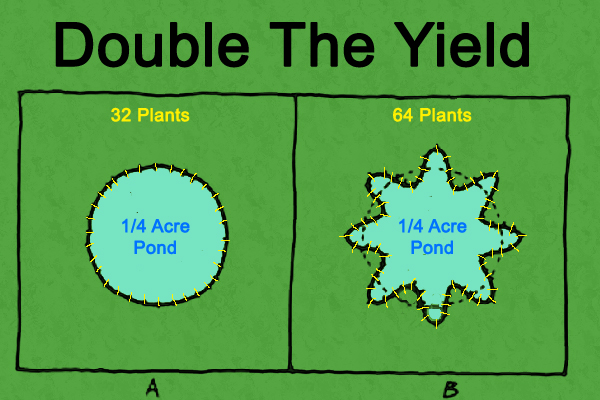
Patterns: are descriptions of energy, and can occur in both space and time – from the branching of a river system or the veins in a leaf, to the regular pulse of blood through your body, or the motion of wind systems across the face of the globe. Small and large scale. Spirals are evident in a snail’s shell as in a galaxy! Where patterns meet a boundary is created, and this can be a very fruitful place. These boundaries are where media interface, and so where they exchange energy. Places where things happen and are typically highly productive. Such boundary conditions or “edges” are everywhere in nature, such as between air and earth, water and soil, and so on, but also in human societies. Every boundary that separates different media, ecological assemblies, physical states or flow conditions has a unique potential. Living translators – such as trees, fish or plants – will often locate themselves at these edges, given that they are productive places, and we can promote the productivity of our design by creating spatial and temporal niches for species at boundaries. By designing for boundary conditions and good placement of translators we can harness a lot of energy. We can use the spiral pattern to create an herb spiral that gives a large growing area for a wide variety of plants in a relatively small space. We can create a pond with sinuous edges rather than a rectangular one to maximise its edge and promote energy exchange between components, and we can use branching patterns to divert water across our site to the places it is needed most.

Soil: Importance of soil and how to keep it healthy. Clay, silt and sand. To test your soil’s structure, mix samples from several points across the site and add to a jar of water. Shake well then allow it to settle into layers. The particles will settle in the following order: sand, silt, and finally clay. Clay are the smallest particles, so if you have a greater proportion of those, your soil will hold water, while a sandy soil drains more easily. A healthy soil will also have within it the three primary nutrients required by plants, which are nitrogen, phosphates, and potassium. A pH level of between 6 and 7.5 is ideal vegetable growing conditions, while between 5.4 and 10 provides ample variation to grow a wide range of plant species, as long as calcium is present in the soil. Soil biota refers to the microorganisms living in the soil and the larger animals that interact with it, so that’s everything from bacteria (of which there can be billions in just one teaspoon of soil!) fungi, and nematodes, to worms, snails, and rabbits. It is imperative that mulching, green manure, hedgerows and minimal cultivation of the soil become integral parts of our land management systems.
Earthworks: can reduce the site’s exposure to wind, noise or erosion. We can also construct earthworks to create shelter, terrace slopes for cultivation, protect against fire or wildlife, direct water flow, store water, allow soil water recharge, create storage spaces, or to access useful materials, such as clay. Use contour maps and plans of your site to choose the best location for the earthwork you want to establish, whether it be a road, dam, house, drain, or whatever. Banks are arguably the easiest type of earthwork to construct. In most soil types cutting banks to a concave shape and designing some form of drainage – such as notches at the top of the slope – will help keep the bank stable. A bench in an earthwork is a flat cut made into a slope. They are useful to provide access to steep sites, and are used to site houses in hilly locations. They also provide easier harvesting of the plants located on either side of the bench. Terracing resembles a series of small benches cut into a slope, except that the benches are hollowed slightly to retain water. You should always make provision to store all the topsoil that comes from the excavation.
Aquaculture: the cultivation of aquatic animals and plants. Overexploitation has critically damaged aquatic ecosystems. To allow them to recover we must stop fishing almost all species in the sea. You can sometimes get as much as 20 times the yield for the equivalent input of energy! A pond can have other benefits for your site, too, including cleansing pollutants, acting as a heat store, being a reserve to be used in case of wild fire, providing irrigation and even somewhere to have a swim! Water quality is important and flowing water will give it the oxygen it needs which can be done with solar pumps. Other things you need to manage are the water’s pH level, its salinity, its temperature, and the level of wastes and you can do it all without chemicals. Insects are one of the best sources of putting weight on your fish for the least input of energy. From mealworms, cockroaches and termites, to snails and worms and also plants that attract insects. Manure goes down through the aquaculture system it aids in yields of everything from plants and crustaceans to the fish themselves. This is called a ‘flow down’ of yield.
Collaboration not competition: We need to create natural systems that meet the needs of both people and the earth. Share knowledge. Permaculture ethics of ‘Care of the Earth’, ‘Care of People’, and ‘Share the Surplus’. Money needs to be linked to useful real assets, not baubles, trinkets and material goods that only exist for the purpose of spending money. Like water is to a landscape, money should act as the transport by which trade occurs. Like water it is not the amount that matters – and too much can be bad – but the uses to which it is put that matters. And like water in a permaculture garden, recycling money within the local economy makes for a stronger, more self-reliant system. Sometimes we don’t even need a money-based system. The informal economy is one that shares labor, time, and skills, swapping goods and services, rather than selling or purchasing for money.
Mulch: this layer builds up over time as leaves fall from trees, animals eat and deposit plant matter and other animals, and organisms die and rot. Suppression of weeds, etain moisture in the soil, protect the soil from erosion by wind, provides a screen from the harshest of the summer heat and the chill of the winter cold. If mulch is organic, it will decompose over time and add vital nutrients to the soil to aid plant growth. Pine needles are good as they’re harder and last longer. Woodchips, sawdust, newspaper, cardboard, grass clipping, grain husks, straw are good examples. Living mulch – sometimes called “green” mulch – is just that: mulch that is alive. Fast-growing plants that are deliberately grown to serve many of the purposes of more traditional mulch. Common living mulch species include comfrey, alfalfa and clover. Chop and drop is a good idea as it copies nature. You can use rocks to mulch in arid places.
Companion, guild & succession planting
Plants in the wilderness, on the whole, work together to create a harmonious, balanced ecosystem.
1. Companion planting refers to growing two species of plants next to one another because of the benefits that doing so brings to each one.
2. A guild is a planting arrangement that incorporates several different species of plant, each of which performs a function that has a positive impact upon the growing system as a whole, giving all the members of the guild the best conditions in which to survive and thrive and, in turn, maximising the potential for yield for the permaculture gardener.
3. Succession planting is designed to give you as much vegetable harvest from your garden beds as possible over the course of a growing season. Avoid having a glut of vegetables when everything ripens simultaneously.
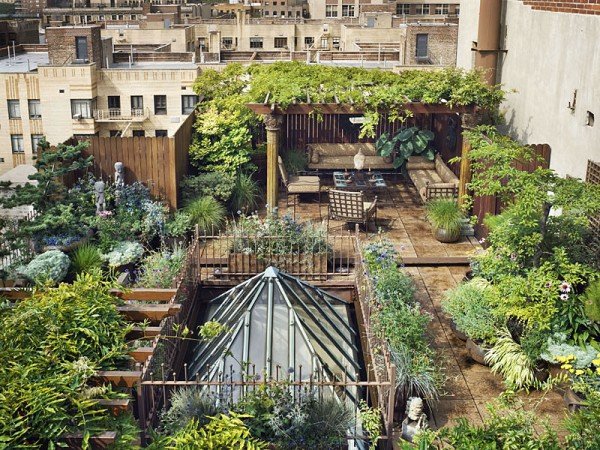
Urban Permaculture: Basically it’s scalable for anywhere. Windowsills, container gardening, green roofs, green walls, roof bee hives. Get community together, look for derelict or unused land, have small livestock. Land share is an initiative puts people who have land available but not the time or inclination to cultivate it in touch with those who are in the inverse situation – they have the drive to start a permaculture garden but lack the space to do so. The landowner gives the gardener permission to transform the site in exchange for a small share of the harvest.

Compost: when organic material decomposes. The ultimate ingredient for building and augmenting healthy soil. As well as recycling material to avoid waste, composting will also reduce the amount of refuse that you are adding to the municipal system. This recycling of waste also helps to reduce the emissions of methane that occur when organic matter decomposes in landfills, so reducing greenhouse gas emissions, helping combat climate change. Two key ingredients are carbon and nitrogen – ratio of adding three parts carbon-heavy organic material to your pile for every one part of more nitrogen suffused material (three parts brown stuff to one part green). Brown material – ashes, wood, bark, twigs, leaves, newspaper, cardboard, straw, peat moss and pine needles. Green material – grass clippings, hedge clippings, vegetable scraps, manure, general garden and kitchen waste, coffee grounds, hay and seaweed. Other factors – water and air – which are both related to a subsidiary factor: temperature. ”Cold” composting – between approximately 5 and 40 degrees C. Decomposition process takes between 6 and 12 months. “Hot” composting – 40 degrees C, decomposition process is much quicker, turning raw organic materials into useable compost in a matter of months, if not weeks.
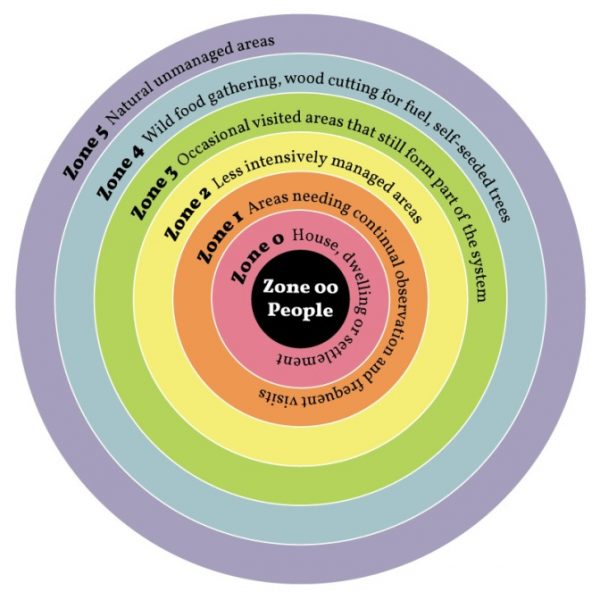
Soils and Garden Beds: Home to many different animals – from bacteria, fungi and other microorganisms to larger creatures, such as burrowing mammals. Apart from using compost and mulch to improve soil, using legumes to fix nitrogen in the soil, and sowing cover crops to add nutrients and protect the soil from erosion. Clipping beds and plucking beds would be in Zone 1. Narrow beds for things like carrots, eggplant and beans and broad beds right behind. Talks about Zone 2 options and keyhole beds.
Course Outline
Part 1 – Fundamentals
1 How can permaculture change the world?
2 The eight steps to permaculture design success
3 What do a snail and a galaxy have in common?
4 Why we need to stop treating soil like dirt
5 Dig in and find out how to maximize water efficiency
6 Could this be the future of food?
7 Can permaculture fix our broken society?
8 Mulch – Why you do NOT want to miss out on mulch
9 Companion, guild & succession planting – Learn how to make the connection to permaculture
10 Urban Permaculture – From high-rises to highways – permaculture is an urban phenomenon
11 Compost – This is the most amazing recycling process in the world
12 Soils & Garden Beds – Discover the most important foundation of permaculture
Other courses which require purchase
– Greener Home
– Aquaponics
– Building a Green Property
– Chickens
– Permaculture Basics
– Maximum Gardening
– Prolonging the Harvest
– Mindfulness and Meditation
– Working with wildlife
– Regenerative Ecological Design
– Communication
– Companion, Guild and Succession Planting
– 60 Days to a Healthier Life
– Compost: The essential guide
– Graywater Reuse
– Mediation Fundamentals
– Mulch: A Permaculture Marvel
– Rainwater Catchment
– Soil and Garden Beds
– Suburban Permaculture Course
– Water Earthworks
Amazon #ads


